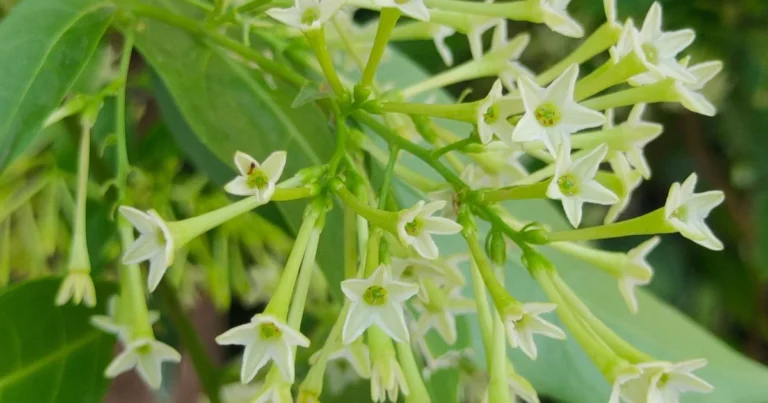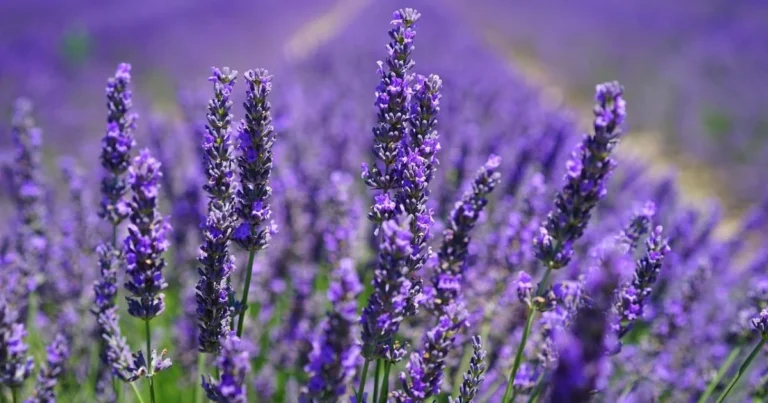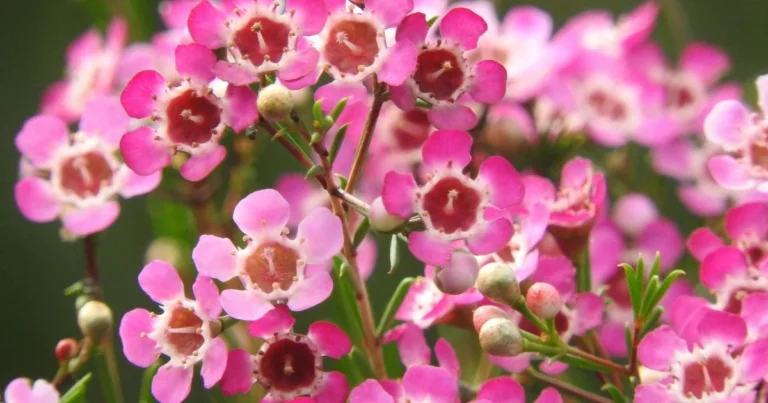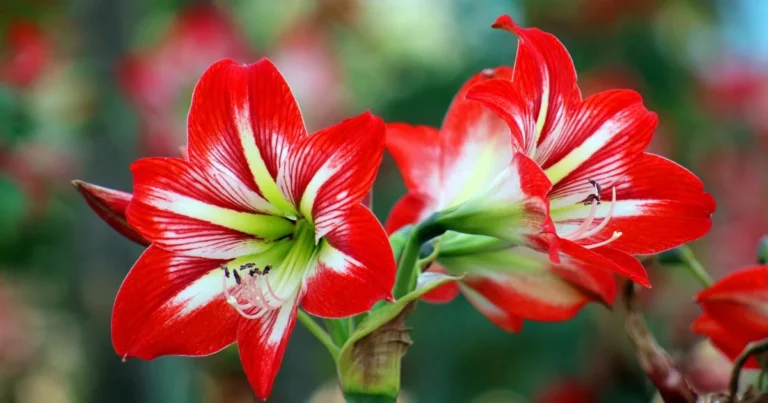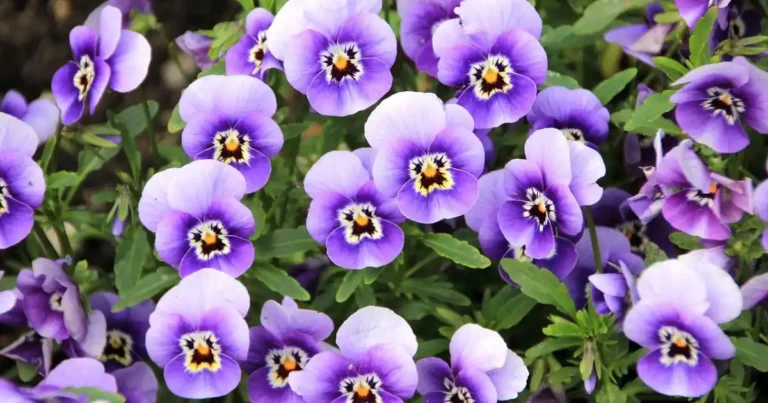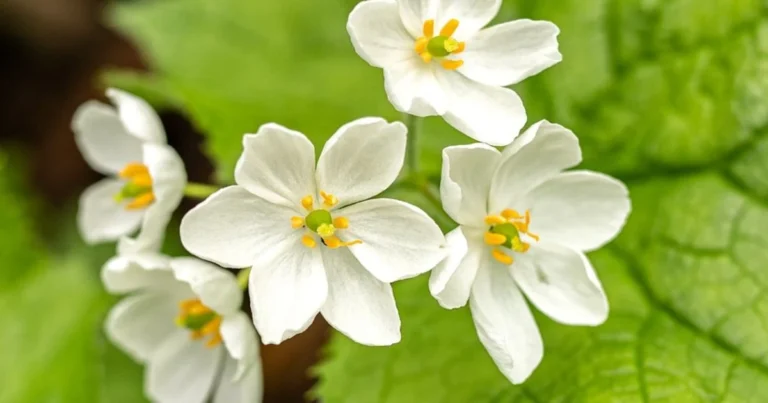Explore 37 Gorgeous Flowers That Start with C
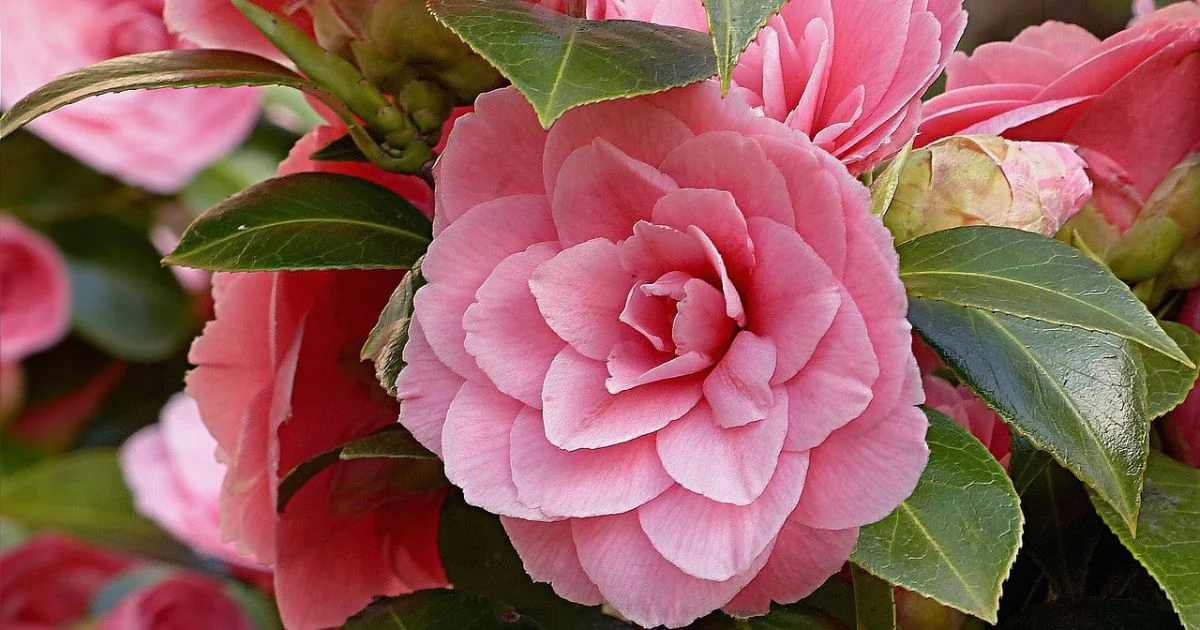
Flowers that start with C offer a world of beauty and variety that will amaze any plant lover. From vibrant colors to unique shapes, these blooms are sure to capture your attention. Whether you’re a seasoned gardener, a flower enthusiast, or simply looking for fresh ideas, this list of 37 flowers will inspire you. Let’s explore the charm of these wonderful blooms and uncover their hidden stories!
Table of Contents
A Blooming Journey Begins
Before we dive into the rich details, let this be your invitation to explore the unique beauty of each flower. From classic favorites to hidden gems, these flowers that start with C will bring color and joy to your garden or floral arrangements.
List of Different Flowers That Begin With C
1. Carnation
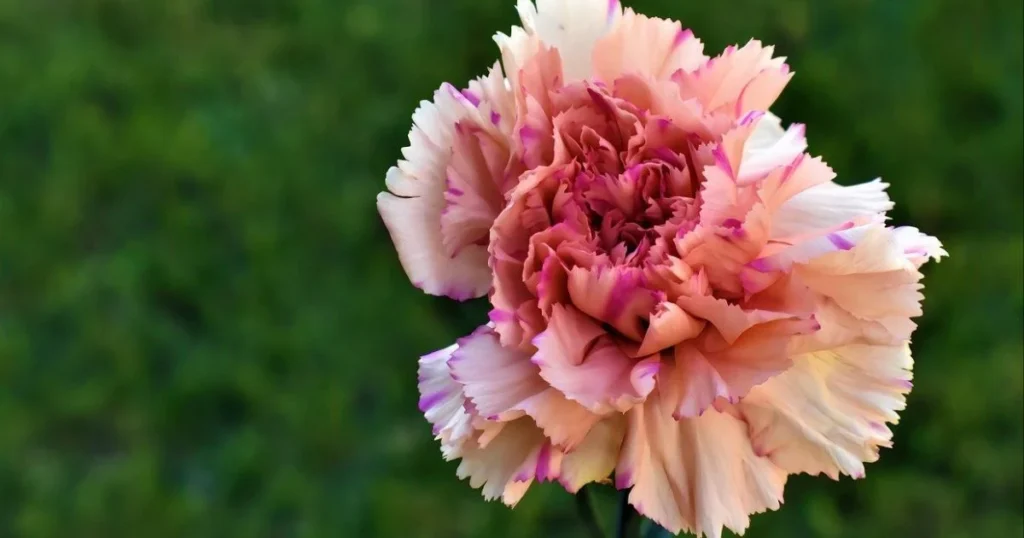
Appearance: Carnations are known for their ruffled, layered petals that create a delicate yet full appearance. They’re often compared to miniature pompoms.
Fragrance: A sweet, spicy scent makes carnations a popular choice in perfumes and floral bouquets.
Color: Available in a variety of colors, including red, white, pink, yellow, and even green.
Symbolism: Red carnations symbolize love, white carnations signify purity, and pink carnations are often associated with gratitude.
Origin: Scientific Name: Dianthus caryophyllus Native to: Eurasia
Where You Can Find: Carnations are often cultivated in gardens, greenhouses, and found in floral arrangements across the globe.
2. Cosmos
Appearance: With their daisy-like flowers and feathery foliage, cosmos exude a cheerful and light-hearted vibe.
Fragrance: While not heavily scented, cosmos have a faint, pleasant smell.
Color: Shades of pink, white, and purple dominate, adding a playful touch to landscapes.
Symbolism: Symbolizes harmony and peace, making them a thoughtful gift.
Origin: Scientific Name: Cosmos bipinnatus
Native to: Mexico
Where You Can Find: Cosmos thrive in meadows, roadside landscapes, and wildflower gardens, attracting pollinators like bees and butterflies.
For more information on growing and caring for cosmos flowers, check out this detailed guide from The Spruce on how to plant, care for, and troubleshoot common issues with cosmos.
3. Chrysanthemum
Appearance: Chrysanthemums boast intricate, layered petals in diverse shapes, from pompom-like to daisy-style.
Fragrance: A mild, earthy aroma that varies by variety.
Color: Comes in a rainbow of colors, including yellow, orange, white, and purple.
Symbolism: Represents longevity and joy in many cultures, especially in Asia.
Origin: Scientific Name: Chrysanthemum morifolium
Native to: East Asia
Where You Can Find: Chrysanthemums are found in gardens, potted plants, and as cut flowers in arrangements worldwide.
4. Camellia
Appearance: Camellias are admired for their glossy, evergreen leaves and perfectly symmetrical, rose-like flowers.
Fragrance: Most varieties are not fragrant, but their visual beauty makes up for it.
Color: Shades of white, pink, and red dominate the camellia palette.
Symbolism: Symbolizes admiration, perfection, and deep love.
Origin: Scientific Name: Camellia japonica
Native to: Asia (Japan, China, and Korea)
Where You Can Find: Camellias are popular in gardens and parks, especially in regions with mild winters.
5. Columbine
Appearance: Columbines have delicate, bell-shaped flowers with spurred petals that give them a whimsical look.
Fragrance: A faint, sweet scent that’s subtle yet charming.
Color: Found in combinations of blue, pink, yellow, and white.
Symbolism: Associated with courage and faith.
Origin: Scientific Name: Aquilegia Native to: Northern Hemisphere, including North America and Europe.
Where You Can Find: Columbines are commonly found in woodlands, rocky slopes, and cottage gardens.
6. Coneflower
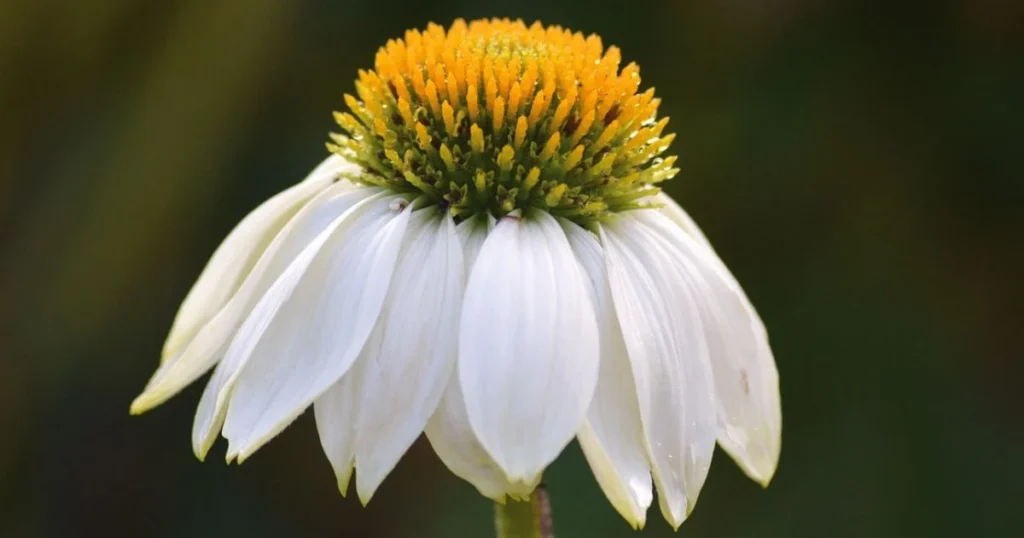
Appearance: Coneflowers have prominent, cone-shaped centers surrounded by drooping petals, giving them a distinctive look.
Fragrance: A mild, earthy scent.
Color: Typically purple, but also available in yellow, white, and orange.
Symbolism: Represents health and healing.
Origin: Scientific Name: Echinacea purpurea Native to: North America
Where You Can Find: Often found in prairies, meadows, and pollinator-friendly gardens.
7. Clematis
Appearance: Clematis vines produce star-shaped flowers with a wide range of sizes and colors.
Fragrance: Many varieties have a sweet, delicate fragrance.
Color: Shades of purple, blue, pink, white, and yellow.
Symbolism: Signifies ingenuity and mental beauty.
Origin: Scientific Name: Clematis Native to: China and Japan, with species found worldwide.
Where You Can Find: Clematis thrives in trellises, arbors, and garden borders.
8. Crocus
Appearance: Small, cup-shaped flowers that bloom close to the ground.
Fragrance: A light, fresh scent reminiscent of spring.
Color: Purple, yellow, white, and striped varieties.
Symbolism: Represents cheerfulness and youthfulness.
Origin: Scientific Name: Crocus sativus Native to: Southern Europe and the Middle East.
Where You Can Find: Crocuses are found in alpine meadows, rock gardens, and early spring landscapes.
9. Canna Lily
Appearance: Tall plants with large, lush leaves and vibrant blooms resembling orchids.
Fragrance: Mildly scented or fragrance-free, depending on the variety.
Color: Shades of red, orange, yellow, and pink dominate.
Symbolism: Represents confidence and beauty.
Origin: Native to Central and South America (Canna indica).
Where You Can Find: Found in tropical and subtropical gardens, near ponds or water features.
10. California Poppy
Appearance: Delicate cup-shaped flowers with thin, papery petals.
Fragrance: Mild and earthy.
Color: Bright orange, yellow, and red.
Symbolism: A symbol of peace and resilience.
Origin: Native to California (Eschscholzia californica).
Where You Can Find: Commonly seen in wildflower meadows, roadsides, and gardens.
11. Calla Lily
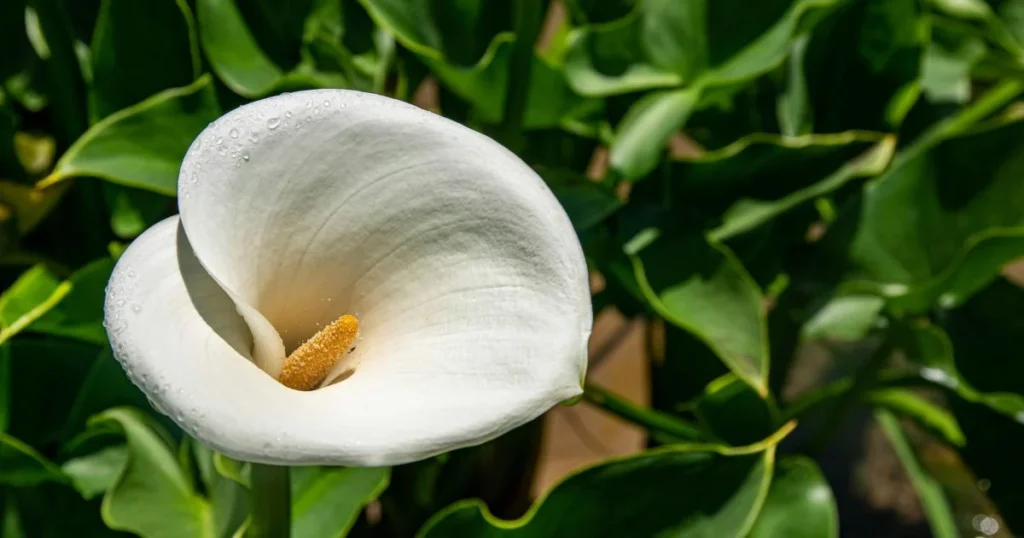
Appearance: Sleek, trumpet-shaped flowers with smooth, glossy leaves.
Fragrance: A subtle, sweet scent.
Color: White, yellow, pink, and purple.
Symbolism: Purity, elegance, and rebirth.
Origin: Native to South Africa (Zantedeschia).
Where You Can Find: Popular in floral arrangements and water gardens.
12. Candytuft
Appearance: Small clusters of delicate flowers with narrow leaves.
Fragrance: A soft, pleasant aroma.
Color: White, pink, and lavender.
Symbolism: Represents sweetness and cheer.
Origin: Native to Europe (Iberis sempervirens).
Where You Can Find: Thrives in rock gardens and as ground cover.
13. Cape Daisy
Appearance: Daisy-like flowers with vibrant hues and dark centers.
Fragrance: Mild and earthy.
Color: Purple, orange, yellow, and white.
Symbolism: A symbol of optimism and happiness.
Origin: Native to South Africa (Osteospermum).
Where You Can Find: Found in gardens and borders, attracting pollinators.
14. Cardinal Flower
Appearance: Tall spikes of bright red, tubular blooms.
Fragrance: Light and sweet.
Color: Primarily red.
Symbolism: Passion and dedication.
Origin: Native to North America (Lobelia cardinalis).
Where You Can Find: Grows in wetlands, streamsides, and rain gardens.
15. Coral Bells
Appearance: Clusters of small bell-shaped flowers atop wiry stems, with colorful foliage.
Fragrance: Lightly floral.
Color: Red, pink, and white blooms; leaves vary in shades of green, bronze, and purple.
Symbolism: Gentleness and tranquility.
Origin: Native to North America (Heuchera).
Where You Can Find: Common in shade gardens and woodland landscapes.
16. Crown Imperial
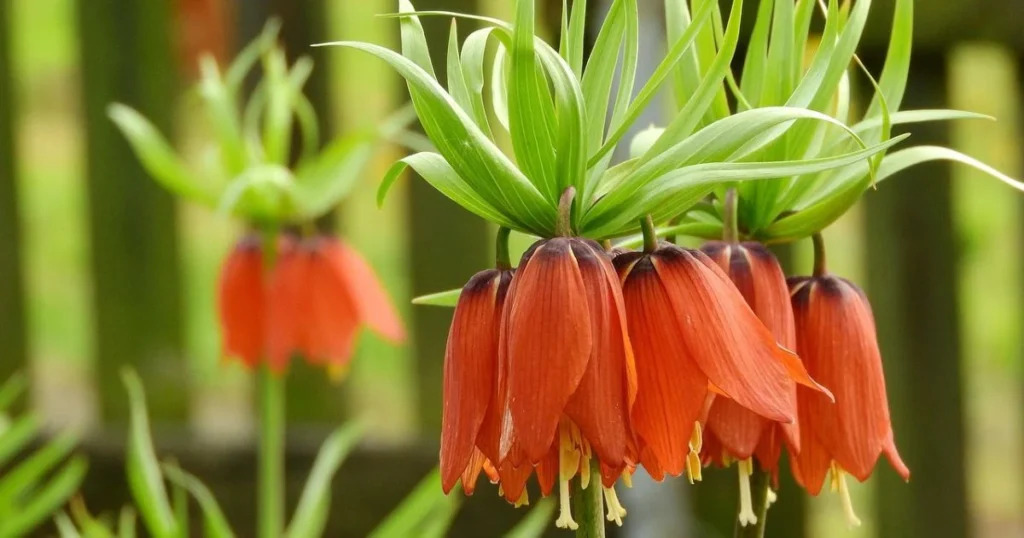
Appearance: Tall stems with large, bell-shaped flowers that hang downward.
Fragrance: Musk-like scent.
Color: Yellow, red, and orange.
Symbolism: Royalty and grandeur.
Origin: Native to Asia and the Middle East (Fritillaria imperialis).
Where You Can Find: Found in formal gardens and flowerbeds.
17. Cornflower
Appearance: Bright, star-like blooms with fringed petals.
Fragrance: Subtle, sweet aroma.
Color: Blue, pink, and white.
Symbolism: Represents hope, remembrance, and resilience.
Origin: Native to Europe (Centaurea cyanus).
Where You Can Find: Seen in wildflower meadows and cottage gardens.
18. Chinese Lantern
Appearance: Unique, papery, lantern-shaped seed pods.
Fragrance: Notable for its earthy scent.
Color: Orange and red pods.
Symbolism: Represents protection and abundance.
Origin: Native to Asia (Physalis alkekengi).
Where You Can Find: Grown in ornamental gardens and floral arrangements.
19. Chrysanthemum
Appearance: Large, layered blooms with a wide variety of petal shapes.
Fragrance: Spicy and earthy.
Color: White, yellow, red, purple, and pink.
Symbolism: Longevity, joy, and optimism.
Origin: Native to Asia and Northeastern Europe (Chrysanthemum morifolium).
Where You Can Find: Popular in gardens, floral arrangements, and festivals.
20. Columbine
Appearance: Nodding, spurred flowers with intricate patterns.
Fragrance: Light and floral.
Color: Shades of blue, purple, red, and yellow.
Symbolism: Faith, hope, and love.
Origin: Native to North America and Europe (Aquilegia).
Where You Can Find: Found in woodland gardens and shaded areas.
21. Common Camellia
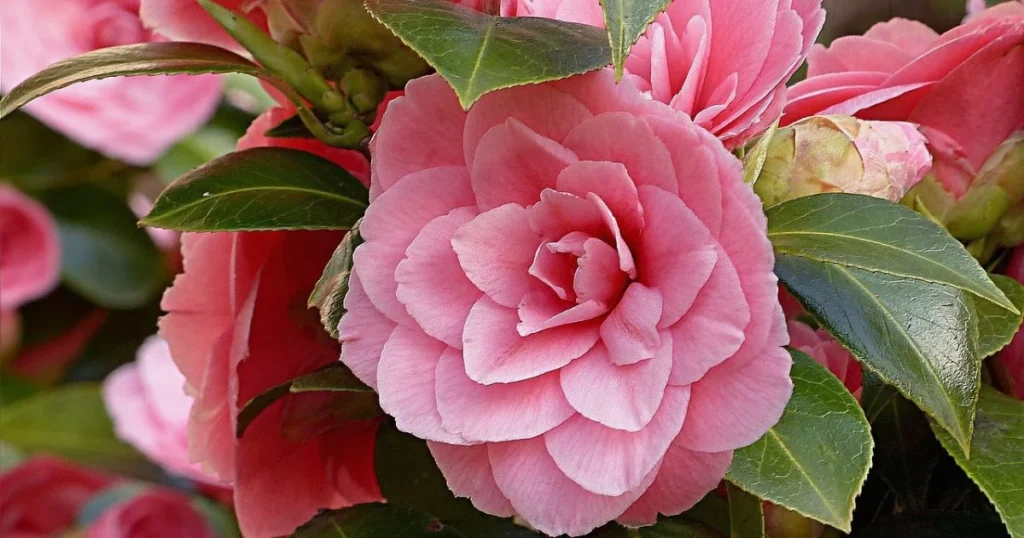
Appearance: Large, rose-like flowers with glossy, dark green leaves.
Fragrance: Mild, sweet scent.
Color: White, pink, red, and variegated.
Symbolism: Admiration, perfection, and gratitude.
Origin: Native to East Asia (Camellia japonica).
Where You Can Find: Grown in gardens and as ornamental shrubs.
22. Creeping Phlox
Appearance: Low-growing mats of small, star-shaped blooms.
Fragrance: Subtle and sweet.
Color: Pink, purple, blue, and white.
Symbolism: Harmony and resilience.
Origin: Native to North America (Phlox subulata).
Where You Can Find: Used as ground cover in rock gardens and slopes.
23. Clivia
Appearance: Clustered trumpet-shaped flowers with thick, strap-like leaves.
Fragrance: Sweet and slightly citrusy.
Color: Orange, yellow, and red.
Symbolism: Prosperity and beauty.
Origin: Native to South Africa (Clivia miniata).
Where You Can Find: Found in indoor pots and shade gardens.
24. Chinese Wisteria
Appearance: Cascading clusters of fragrant flowers on climbing vines.
Fragrance: Strong and sweet, like grapes.
Color: Shades of lavender, purple, and white.
Symbolism: Love and elegance.
Origin: Native to China (Wisteria sinensis).
Where You Can Find: Commonly seen on trellises, pergolas, and fences.
25. Canterbury Bells
Appearance: Bell-shaped blooms arranged in upright clusters.
Fragrance: Mildly sweet and floral.
Color: Blue, pink, purple, and white.
Symbolism: Gratitude and faith.
Origin: Native to Southern Europe (Campanula medium).
Where You Can Find: Grown in cottage gardens and flower borders.
26. Chinese Forget-Me-Not
Appearance: Small, star-shaped flowers with delicate petals.
Fragrance: Lightly floral and fresh.
Color: Blue and occasionally white or pink.
Symbolism: Remembrance and fidelity.
Origin: Native to China (Cynoglossum amabile).
Where You Can Find: Found in wildflower gardens and naturalized meadows.
27. Corkscrew Flower
Appearance: Twisted, spiral-like flowers with unique shapes.
Fragrance: Intense and sweet, resembling vanilla.
Color: Creamy white to pale yellow.
Symbolism: Creativity and uniqueness.
Origin: Native to tropical Africa and India (Vigna caracalla).
Where You Can Find: Grown in tropical gardens and as a climbing plant.
28. Crown Vetch
Appearance: Clusters of small, pea-shaped flowers with fern-like leaves.
Fragrance: Mild and fresh.
Color: Pink, white, and purple.
Symbolism: Protection and adaptability.
Origin: Native to Europe, Asia, and Africa (Securigera varia).
Where You Can Find: Found along roadsides, meadows, and slopes for erosion control.
29. Chicory
Appearance: Dandelion-like flowers with delicate, fringed petals.
Fragrance: Mild and earthy.
Color: Light blue, occasionally white or pink.
Symbolism: Simplicity and endurance.
Origin: Native to Europe, now widespread in North America (Cichorium intybus).
Where You Can Find: Found along roadsides, meadows, and gardens.
30. Chinese Hibiscus
Appearance: Large, showy blooms with a prominent stamen.
Fragrance: Light and sweet.
Color: Red, yellow, pink, and white.
Symbolism: Fame, glory, and delicate beauty.
Origin: Native to East Asia (Hibiscus rosa-sinensis).
Where You Can Find: Grown in tropical gardens and as potted plants.
31. Creeping Jenny
Appearance: Small, cup-shaped yellow flowers with trailing vines.
Fragrance: Slightly herbal and earthy.
Color: Bright yellow.
Symbolism: Vitality and resilience.
Origin: Native to Europe (Lysimachia nummularia).
Where You Can Find: Grown as ground cover in gardens and near water features.
32. Cockscomb
Appearance: Uniquely textured blooms resembling a rooster’s comb.
Fragrance: Subtle and earthy.
Color: Red, yellow, orange, and pink.
Symbolism: Boldness and affection.
Origin: Native to tropical Asia and Africa (Celosia cristata).
Where You Can Find: Popular in floral arrangements and garden beds.
33. Chocolate Cosmos
Appearance: Velvety, daisy-like flowers with a rich texture.
Fragrance: A sweet, chocolate-like scent.
Color: Deep reddish-brown.
Symbolism: Warmth and indulgence.
Origin: Native to Mexico (Cosmos atrosanguineus).
Where You Can Find: Grown in specialty gardens and as ornamental plants.
34. Christmas Rose
Appearance: Large, flat blooms resembling wild roses.
Fragrance: Subtle and sweet.
Color: White, sometimes tinged with pink or green.
Symbolism: Hope and purity.
Origin: Native to Europe (Helleborus niger).
Where You Can Find: Grown in winter gardens and shady borders.
35. Coral Vine
Appearance: Cascading clusters of small, heart-shaped flowers.
Fragrance: Sweet and mild.
Color: Bright pink, white, or coral.
Symbolism: Devotion and charm.
Origin: Native to Mexico and Central America (Antigonon leptopus).
Where You Can Find: Found on trellises, fences, and tropical gardens.
36. Crown of Thorns
Appearance: Small flowers surrounded by spiny, thorn-covered stems.
Fragrance: Typically unscented.
Color: Red, pink, yellow, and white.
Symbolism: Endurance and faith.
Origin: Native to Madagascar (Euphorbia milii).
Where You Can Find: Grown as houseplants or in arid gardens.
37. Cosmos
Appearance: Daisy-like blooms with feathery foliage.
Fragrance: Light and fresh.
Color: Pink, white, orange, and red.
Symbolism: Harmony, balance, and peace.
Origin: Native to Mexico and South America (Cosmos bipinnatus).
Where You Can Find: Found in wildflower meadows and pollinator-friendly gardens
Conclusion
This list of flowers that start with C demonstrates the incredible diversity and beauty of nature. From the vibrant carnations to the elegant camellias, each bloom has a story, a purpose, and a unique charm. These flowers not only enhance gardens and landscapes but also play vital roles in ecosystems by attracting pollinators and supporting biodiversity. Let this be your guide to explore, plant, or simply admire these stunning floral treasures.
For more beautiful flower varieties, explore our Flowers category for additional inspiration and gardening tips.
FAQs
What are some examples of flowers that start with C?
Some popular examples of flowers that start with C include carnations, cosmos, chrysanthemums, and camellias.
Where can I buy flowers that start with C?
You can find flowers that start with C at local garden centers, florists, and online retailers specializing in seeds and plants.
How do I care for chrysanthemums?
Chrysanthemums thrive in well-drained soil and require moderate watering. They are one of the easiest flowers that start with C to grow.
Are cosmos flowers good for pollinators?
Yes, cosmos are excellent for attracting pollinators like bees and butterflies, making them one of the eco-friendliest flowers that start with C.
Can camellias grow in colder climates?
Camellias prefer mild winters, but some hardy varieties can withstand colder temperatures, making them versatile flowers that start with C for different regions.

